Changing 'reaching back' to 'the extension'
May 22, 2018 by Brian Earhart in Instruction with 0 comments
Over the last decade as I’ve grown as a player and teacher in both ultimate and disc golf, I’ve seen countless tips being thrown around the internet attempting to help new players improve their throwing mechanics. These tips are always well intentioned. While I’m in love with the fact that the disc sports community is always looking to get new people started out on the right foot, there can be a lot of misconceptions in terms of what will truly help someone develop a simple, scalable throwing style. Learning simple, scalable fundamentals serves as a baseline from which you can begin developing more advanced skills properly. One of the biggest misconceptions I’ve heard is what I want to tackle today. That is:
“Want to throw further? Reach back further.”
AHHHHHHH! Please don’t do that. As I will attempt to show you today, the top backhand throwers are barely “reaching back” at all. I’m going to present the idea that we should begin referring to this part of a backhand throw as “the extension.” And this idea is more than just a semantic change.
What happens when we tell new players to “reach back” to gain distance? Oftentimes, the player’s brain hears that and interprets this direction as meaning that reaching back can only be done with the upper body. As a result, we see this common sequence shown below:
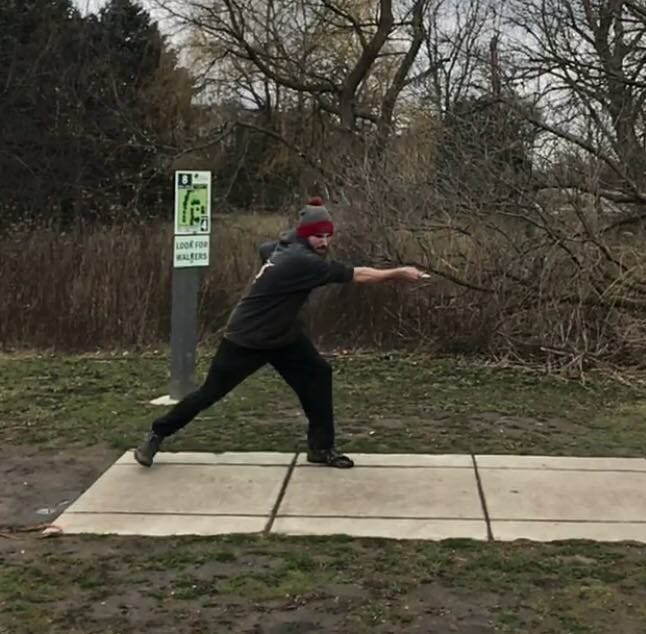 |
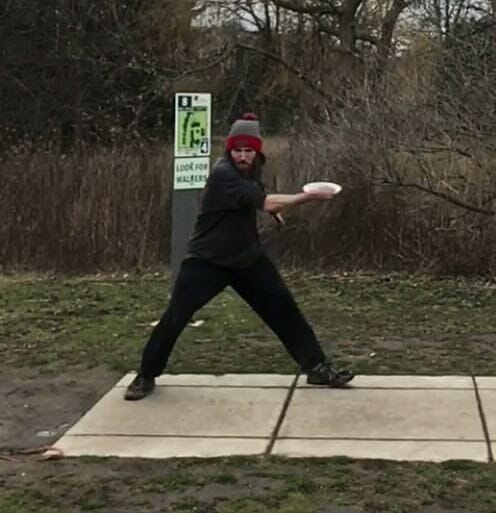 |
In the first image, the disc is way behind in the stance, and the head and spine are bent over. When the player begins pulling the disc forward, in the second image, the body first has to compensate for being bent over and begins moving back to a balanced position before pulling the disc forward. As a result, a disconnect between the upper and lower body occurs. Since the upper body is fully in control, and the lower body is mostly unengaged, distance potential and accuracy for the thrower is hindered greatly.
Time to blow your mind. When observing the technique of two top-tier backhand throwers, you will notice a strange similarity:
They’re not “reaching back” at all.
Look closely at Eagle McMahon’s disc.1 In the first image, on the second step of his approach, he gets the disc into position. His head and spine are upright, the disc is perfectly over the back foot (his left foot going behind creating the x-step) and at his front hip, already in the position he wants to pull from. This position in itself helps to prevent the body from having to compensate or guess the release angle at the last second, tremendously improving accuracy and consistency. Compare where McMahon is in terms of positioning his body at the beginning of his throw with the first image above.
As he proceeds in his approach on the teepad in the second picture, you will see that the disc has barely moved an inch from where he positioned it in the first image, at the second step of his approach (use the large tree behind him as a reference point). The only thing he’s done is gotten his body in front of the disc.
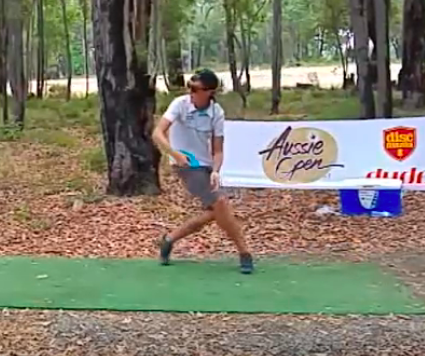 |
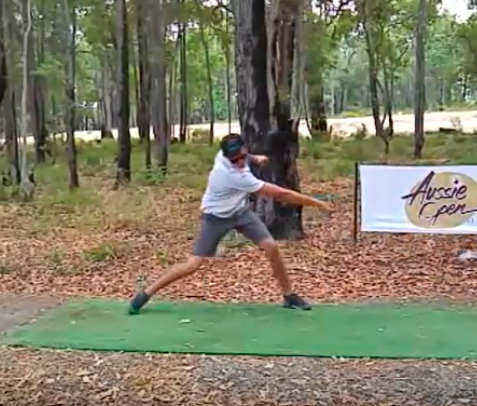 |
Do other top players display this as well? Absolutely. Let’s take a look at Paul McBeth.
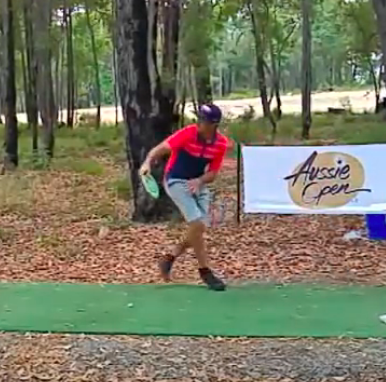 |
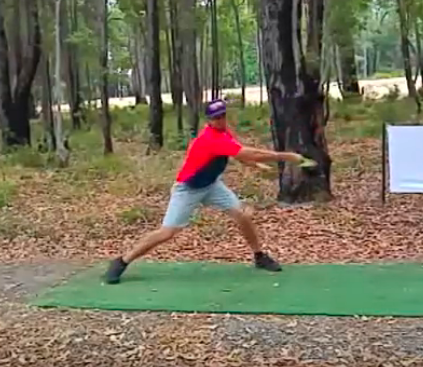 |
As you can see, McBeth does a “pump” to get the disc in position in the first image. His “pump” is a bit more defined than McMahon’s but notice again, in the second image, how the disc never leaves that position once he gets it there on step two of the x-step (again, use the tree behind him as reference).
Once again, he is not “reaching back” at all. He’s getting the disc in position early, then getting his lower body in front of it by using his hips. His head and spine are balanced and his upper body doesn’t have to fall forward to compensate at the last second. As much as McBeth’s initial “pump” movement is a bit more exaggerated compared to McMahon’s, they both display similar mechanics in terms of extending the lower body in front of the disc, rather than pushing the disc backward with the upper body before pulling forward.
In a future article, I plan to elaborate further on this topic with a fantastic drill to begin working on this to improve both distance and accuracy (video included). The days of “perfectly timing your ‘reach back’ with your plant step” are gone.
The following screenshots were obtained by the author from the following video: https://www.youtube.com/watch?v=aWDF5kiSFM4 ↩